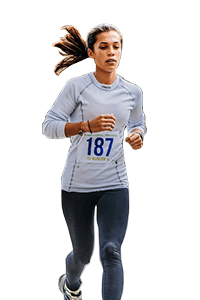Androgen Sensitivity And Exercising
Androgen Sensitivity And Exercising

In the last few years, the concept of androgen sensitivity and exercising has caught many eyebrows.
Let us read about androgen sensitivity and androgen insensitivity before we talk about the concept of androgen sensitivity and exercising.
Androgen insensitivity syndrome (AIS) can be defined as a form of genetic alteration in which the human body gets partially or completely intolerant to testosterone, the primary male sex hormone. This condition affects sexual development during puberty or before the birth of a child. Usually, children born with this health condition are genetically male, with one X and one Y chromosome.
Primary Causes Of Androgen Insensitivity Syndrome
Androgen receptor gene mutations result in androgen insensitivity syndrome (that is also referred to as Androgen resistance syndrome, Dihydrotestosterone receptor deficiency, and Androgen receptor deficiency). This gene is behind providing guidance to create androgen receptor that helps our body cells to respond to androgens (hormones like testosterone). When mutated, this gene tends to inhibit androgen receptors from working smoothly and normally. This makes body cells responsive to androgens or may inhibit body cells from making use of these hormones at all.
It is believed that about 2/3rd of all androgen sensitivity syndrome cases are inherited from mothers whose bodies include an altered copy of the androgen receptor gene or one of their two X chromosomes. The remaining androgen sensitivity syndrome cases happen because of a new mutation that may occur in the mother's egg cell during early fetal development or conception.
Androgen insensitivity syndrome can be classified into three categories:
• Complete androgen insensitivity syndrome (CAIS)
• Mild androgen insensitivity syndrome (MAIS)
• Partial androgen insensitivity syndrome (PAIS)
Complete androgen insensitivity syndrome (CAIS) occurs when the body is unable to properly utilize androgens at all. Children who are born with this health condition tend to possess the external sexual characteristics of females, but born without a uterus. This means that they don't menstruate or cannot conceive. They have a female gender identity and usually raised as females.
On the other hand, children who are born with partial androgen insensitivity (also called Reifenstein syndrome) may have female-like genitalia, genitalia with both male and female characteristics, or genitalia that look like males. Children who are born with mild androgen insensitivity are usually born with male sexual characteristics but are often infertile or experience enlargement of the breasts at puberty.
If androgen insensitivity syndrome is suspected, medical practitioners may recommend blood tests to identify the sex chromosomes, check the genetic changes, and measure sex hormone levels.
It is worthwhile to note here that androgenic hormones play a crucial role in some effects of exercises and physical training. Also, minimal androgen amounts are the differentiating factors between males and females in aggression, bone growth, and red blood cell production. Changes in androgen sensitivity or levels do contribute to increases in protein synthesis, muscle glycogen, and lean body mass that is generally associated with chronic exercise.
Several studies have suggested that women with Polycystic ovary syndrome (PCOS) experience significant improvements in the levels of androgens and insulin sensitivity via resistance training and vigorous aerobic exercise. For instance, women with PCOS are more prone to develop cardiovascular disease, obesity, non-alcoholic fatty liver disease (NAFLD), anxiety, depression, type 2 diabetes, and mood disorders.
This is primarily because the ovaries produce excessive androgen amounts in the case of women with PCOS via hyperstimulation by the intrinsic dysregulation of steroidogenesis or luteinizing hormone. Moreover, insulin resistance and hyperinsulinemia are promoted by hyperandrogenism. This, in turn, can exacerbate hyperandrogenemia while also leading to obesity and weight gain. Also, women with PCOS may experience insulin resistance that has been attributed to increased insulin receptor substrate 1 (IRS1) serine phosphorylation and insulin receptor in muscle.
Thankfully, regular exercises can help women with PCOS and other similar conditions by helping them lose stubborn weight, especially when associated with a healthy, well-balanced diet. Several studies have demonstrated the positive and significant effects of exercises on androgen sensitivity. For instance, progressive resistance training or strength training, aerobic exercise, combination exercises, single bout exercise, exercise in conjunction with dietary modification, or high-intensity interval training can go a long way to the positive concept of androgen sensitivity and exercising.
A study highlighted that a supervised treadmill exercise at 60% VO2max for one hour three days a week improved Gradual dose reduction (GDR) and a measure of atrial natriuretic peptide (ANP, −log[EC50]). Exercise training can significantly enhance the expression of Long chain fatty acids (LCFA) transport proteins (FAT/CD36, CPTI). The inhibition of androgen receptors can minimize the expression of Carnitine palmitoyltransferase I (CPT I) in the skeletal muscle to reduce fat metabolism. Therefore, the suppression AR receptor sensitivity or minimizing sex hormone can inhibit fat metabolism and energy efficiency by suppressing Carnitine palmitoyltransferase I.
We hope that this piece of information on the concept of androgen sensitivity and exercising was useful to you.
Recommended brand - OLYMPUS LABS






